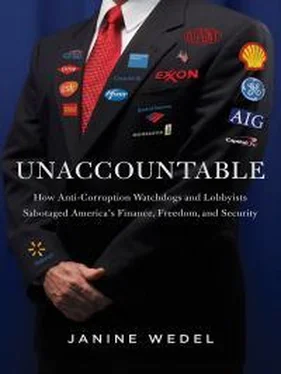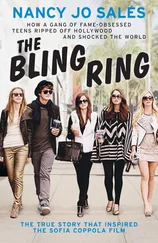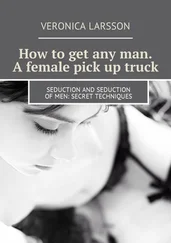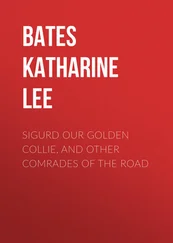That line has allowed Obama the ability to offer a steady stream of branding without reporters first getting a press release and then tempering or countering the spin. Here’s a telling quote from Macon Phillips, the administration’s new media director, during those early days: “Historically the media has been able to draw out a lot of information and characterize it for people. . . . And there’s a growing appetite from people to do it themselves.” 59
The people doing the “characterizing,” of course, are not the volunteers, but Obama spinmasters. That fact points to another notable advantage of this kind of setup to its influencers. Bill Kovach, chairman of the Committee of Concerned Journalists, explains: “They’re beginning to create their own journalism, their own description of events of the day, but it’s not an independent voice making that description. . . .” 60
After the election of Barack Obama in 2008, OFA became Organizing for America, an arm of the Democratic National Committee. This structure departs from past presidents who simply integrated their operations into the existing party apparatus. OFA continued to advocate and agitate among supporters on legislative priorities. Ari Melber, a journalist who studied the group, called it “the largest governance organizing effort by a national party in history,” an unprecedented attempt to convert “a winning campaign’s volunteer network into an organization devoted to enacting a national agenda.” 61The group asked its supporters to press Congress on specific political battles, notably health care, and later immigration reform 62and gun control.
What happens, de facto, when a president has the ability to pitch people any time, day or night, about items on his agenda? To quote journalist Melber, who wrote a seventy-plus–page report on OFA’s first post-election year: 63
Scholars, commentators and members of Congress have raised concerns about how presidents increasingly make appeals directly to the public, rather than working directly with the representative branch of government. Fortifying that model with a powerful, national whip operation [run by O.F.A., as opposed, say, to Congressional whips whose job it is to rally support among its members] could further undermine Congress’ autonomy, in this narrative. Conservative critics of Obama have also argued that he would use his email lists to dominate Congress by conducting the presidency in “campaign mode.”
All the while, OFA has kept a grassroots feel alive. There are the “personalized” e-mails that aim at an authentic touch, asking supporters, say, to sign the president’s birthday card.
Obama’s reelection campaign held its own convention coverage, streamed directly to those who turned over their e-mail addresses to the campaign, free of reporters or impartial analysis.
The result has been a novel organizing hybrid. The New Republic summed it up this way: 64
Obama’s people ha[ve] created something both entirely new and entirely old: an Internet version of the top-down political machines . . . the difference (other than technology) was that this new machine would rely on ideological loyalty, not patronage.
Is the old patronage system giving way to new-style participation? 65OFA encouraged the president’s supporters to host house parties, perform public service, and engage in other social events that don’t directly relate to a policy issue. The takeaway from many Obama supporters is that OFA was empowering the grassroots by helping to create a sense of civic-minded community. A more clear-eyed view is that OFA was trying to keep its army engaged and ready to assist in what really matters—the president’s agenda—and also to fight the lethargy that sets in between elections, which was even more inevitable given the outsized expectations invested in Obama.
But amid the rhetoric of “yes we can,” the “we” in control of OFA, according to reports, was always a very small, select group. Reports such as this trickled out: A mid-level employee who left OFA told me that decisions come squarely from the top down, while the organization tries to maintain the illusion of its grassroots members having a real voice. Another report quotes an activist complaining about “often secretive debate . . . among top campaign staff members.” 66The Washington Post notes that “Obama . . . is working to ensure [OFA] stays within the control of a small group who are charged with protecting the Obama brand.” 67
One volunteer said this to (journalist) Melber: “Seriously, I feel that OFA’s main objective is to facilitate and maintain pseudo personal relationships with supporters in order to exploit them. . . . I think it’s called relationship marketing.” 68
The very impressive turnout on Election Day 2012 may have been the result, in part, of OFA’s success—namely its brand of Internet-driven organizing.
Organizing for Anonymity
What came next involved marketing to super donors. The “new” Organizing for Action in 2013 was reinvented as a 501(c)(4). Remember, these “social welfare” organizations don’t have to disclose their donors. As the New York Times put it, “the . . . organization will rely heavily on a small number of deep-pocketed donors, not unlike the ‘Super PACs’ whose influence on political campaigns Mr. Obama once deplored.” 69It was to include tiers of influence—board of trustees, board of directors—that could be scaled by higher and higher levels of donations. The Times writes: 70
The 30-member board will include a 10-person council made up of “leaders in industry” committed to supporting the group’s agenda. The organization is also creating a task force on policy, whose chairmen will be expected to raise at least $250,000 to finance advocacy work on specific issues. . . .
The president soon attended an OFA “founders’ summit.” The AP, which obtained a “save the date” packet for the event, described the entry price at $50,000 a head. 71After a spate of criticism, the nondisclosure policy was changed. Jim Messina, Obama’s 2012 campaign manager turned head of Organizing for Action, wrote in an op-ed that all donations over $250 would be disclosed quarterly and corporate donations wouldn’t be accepted. 72
Nonetheless, “OFA is an unprecedented organization,” says Democracy 21, a group led by the venerable watchdog Fred Wertheimer, which spelled out some differences between today and yesteryear. For one, the old political parties are being sidestepped. In a blunt letter to the president, Democracy 21 writes in part: 73
No president has ever before helped create and been involved in this kind of privately-funded entity. While there have been a few instances where national political parties established section 501(c)(4) tax-exempt groups to help support their agendas, these groups were terminated relatively quickly. . . . In any event, these groups did not function as an arm of the presidency.
Large amounts provided to OFA create opportunities for individual donors and bundlers to buy corrupting influence over your administration’s policies and decisions. At a minimum, large amounts provided to OFA create the appearance of such corrupting influence.
Later that year, when OFA did report its donors, one could see that just nineteen wealthy people had contributed fourteen percent of its total haul. They included hedge-fund titan David Shaw (of the firm D. E. Shaw), several heirs and heiresses, and some tech millionaires. 74
Meanwhile, other Democratic operatives continued to build their own independent spending groups and 501(c)(4)s that, unlike OFA, would indeed keep their donors secret.
And a system of referrals came into play—a sort of “sharing economy” of donors’ dark money. In 2014, longtime investigative reporter Michael Isikoff got ahold of e-mails showing a New Jersey businessman who wanted to attend an OFA event and was told by its fundraiser: “It’s $25,000 per person . . . and for those that raise or write $100,000 there will be small clutch with the president.” 75
Читать дальше












